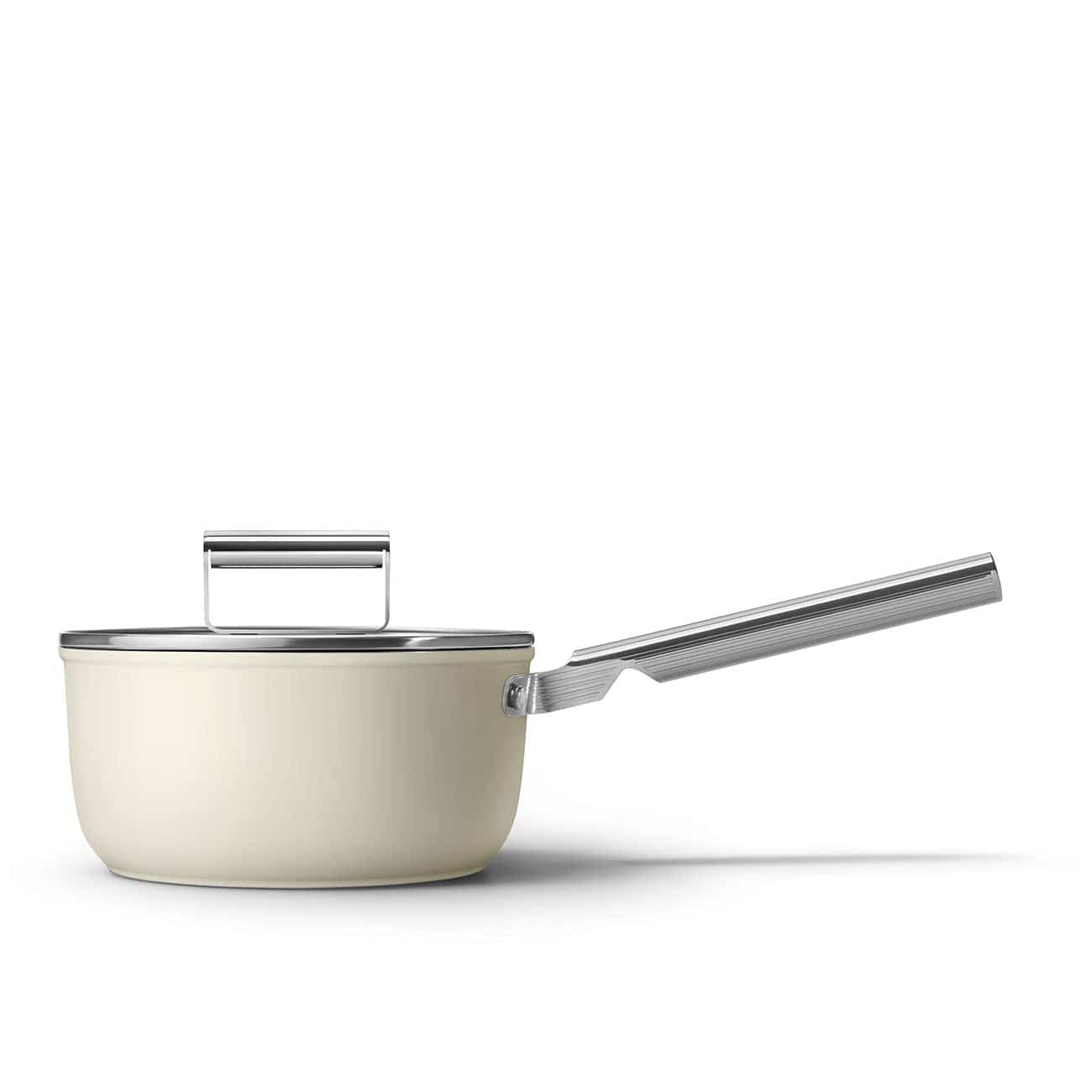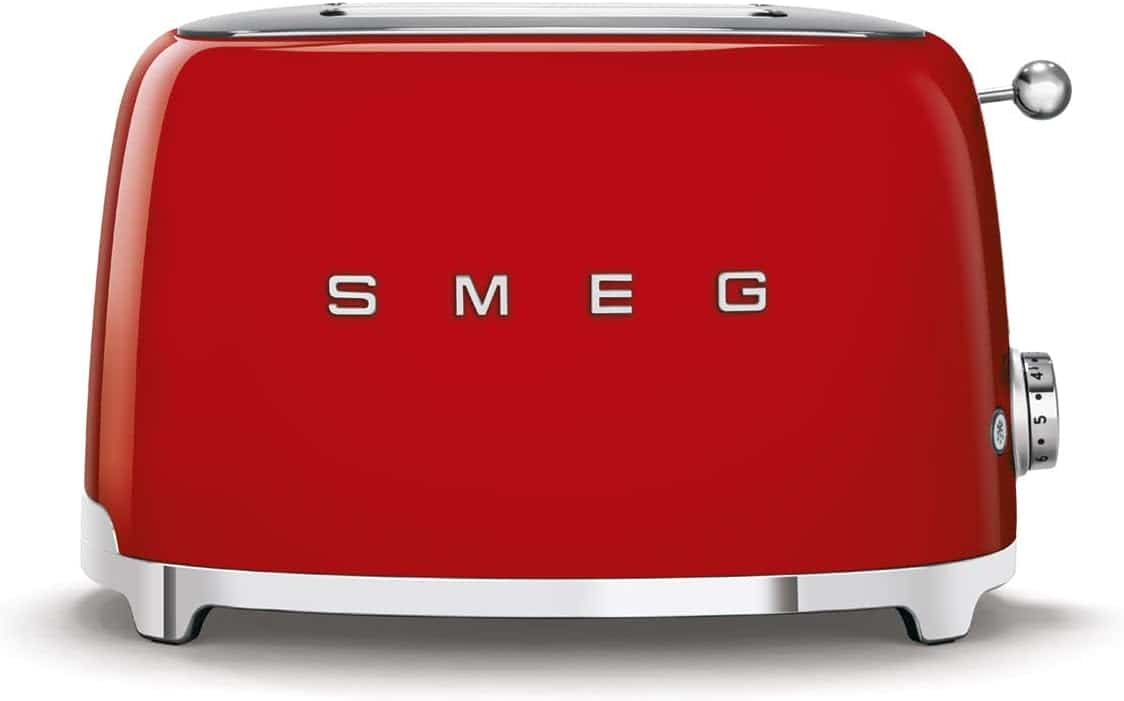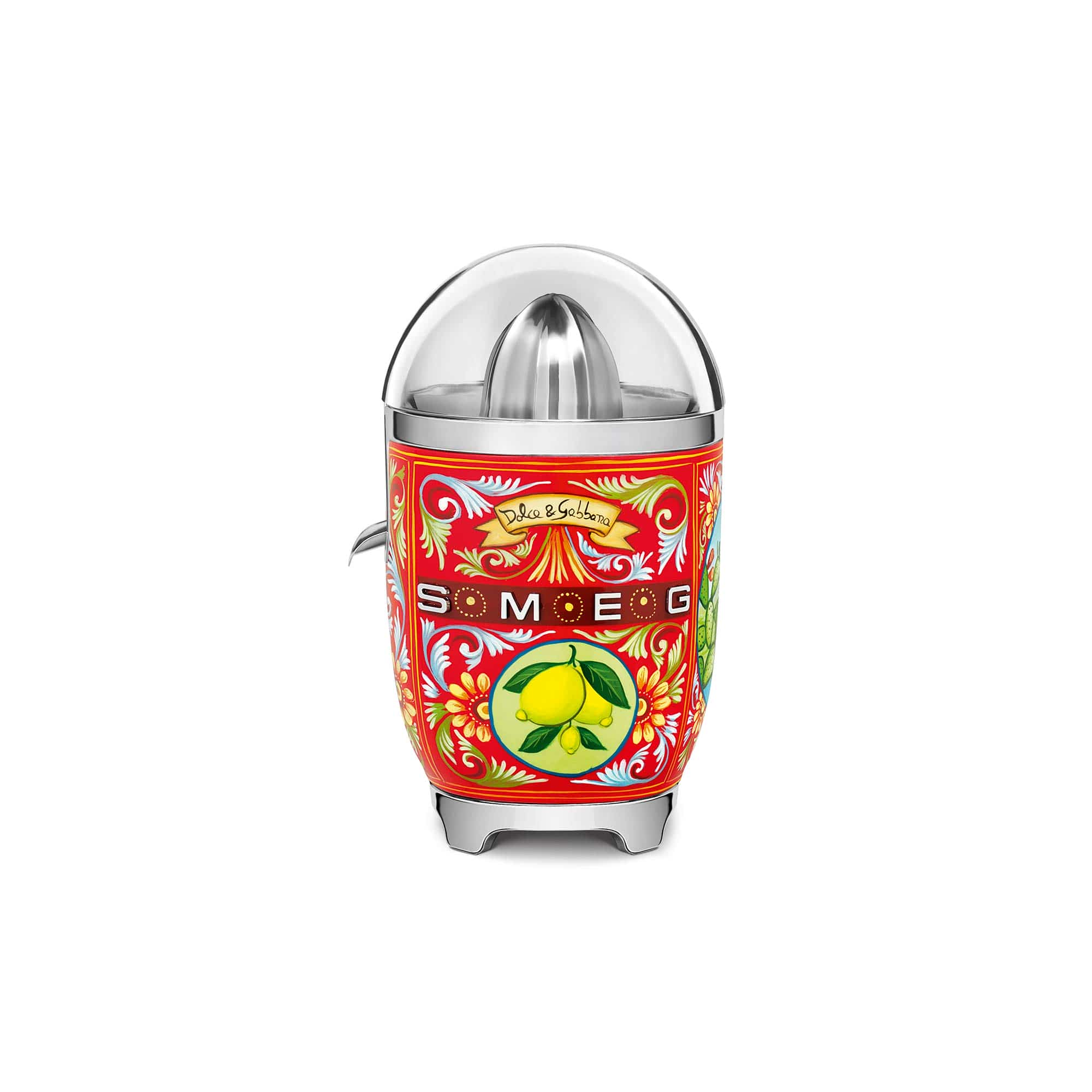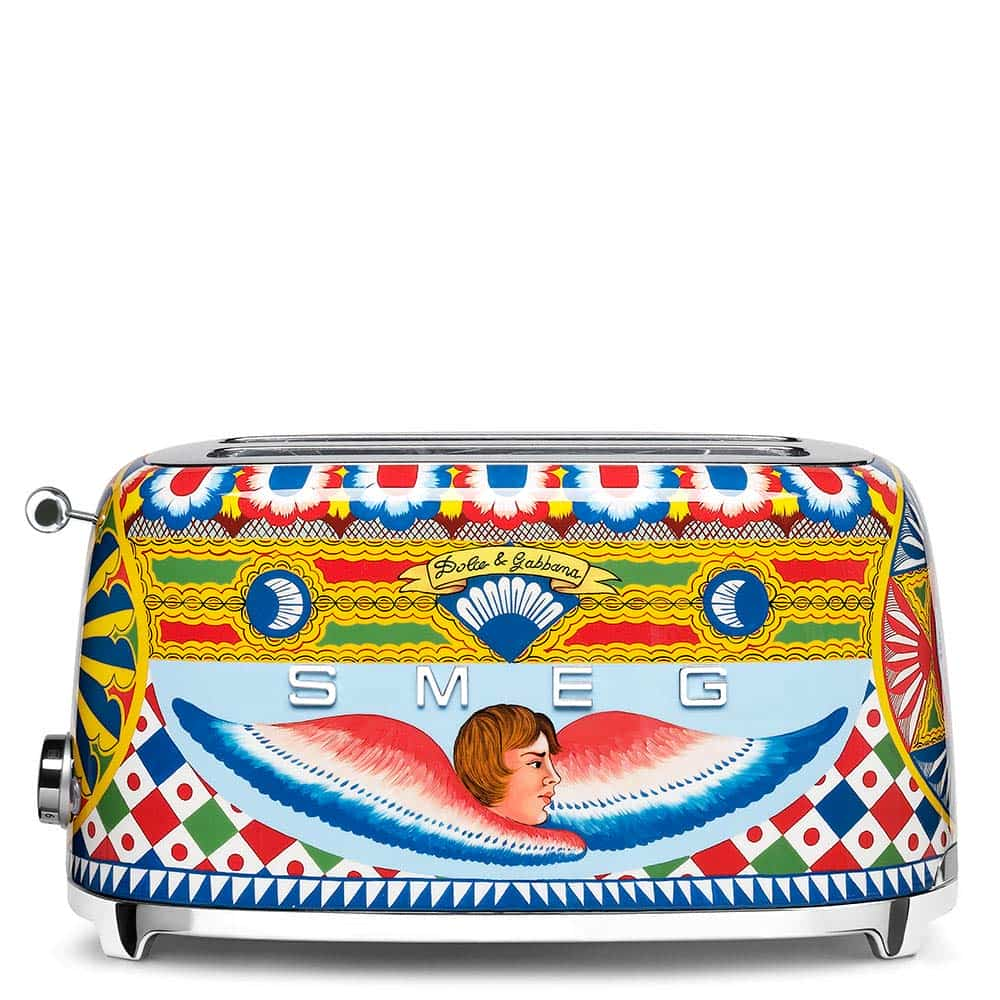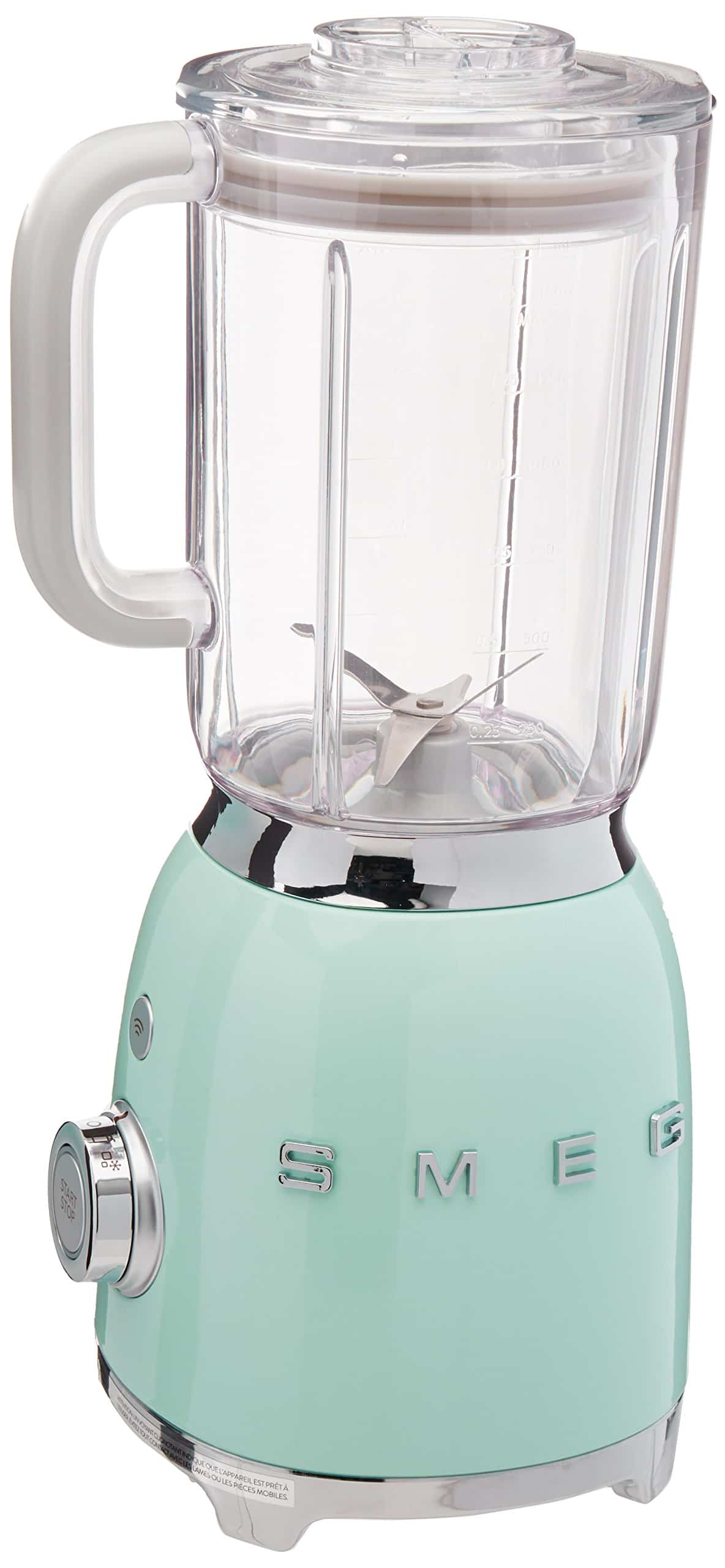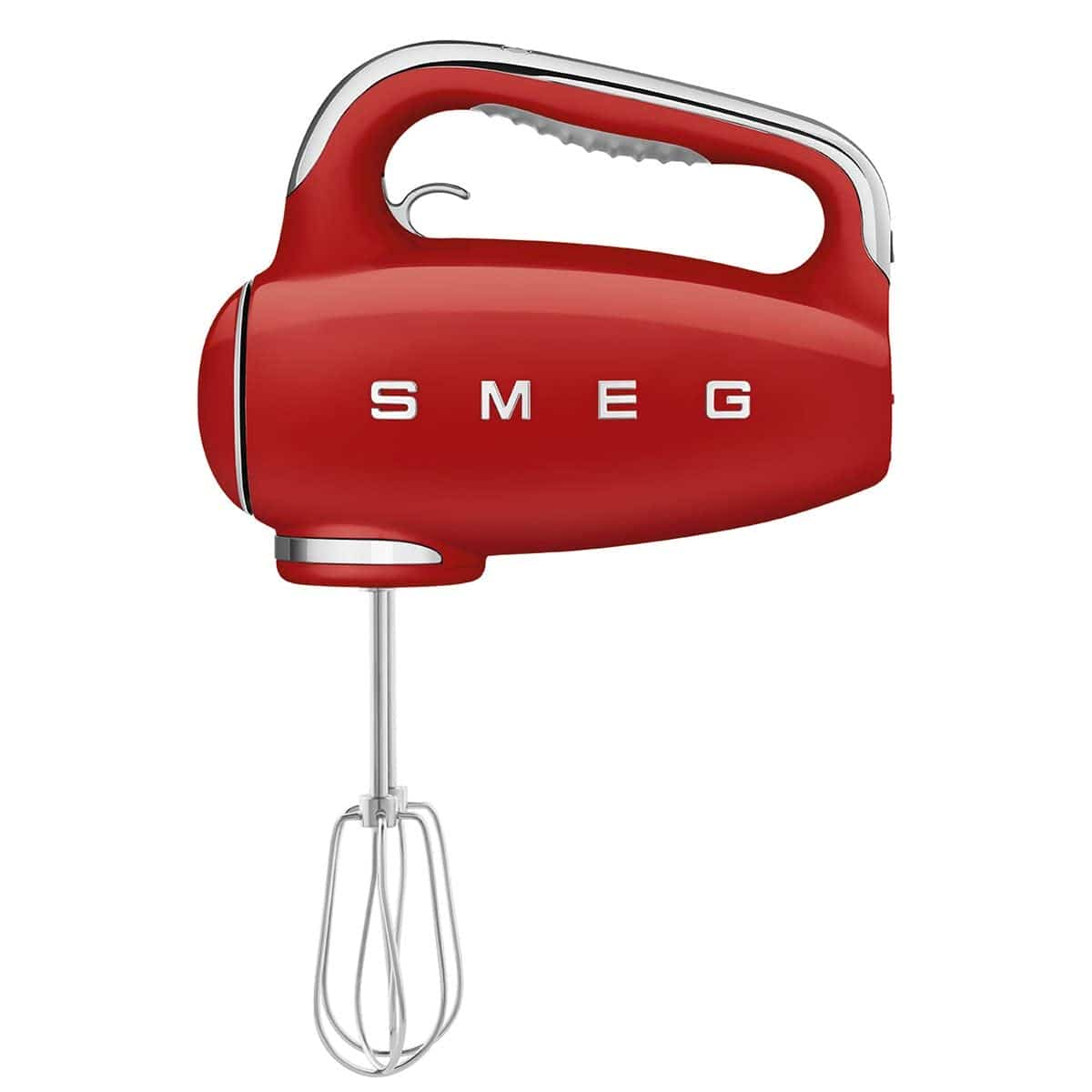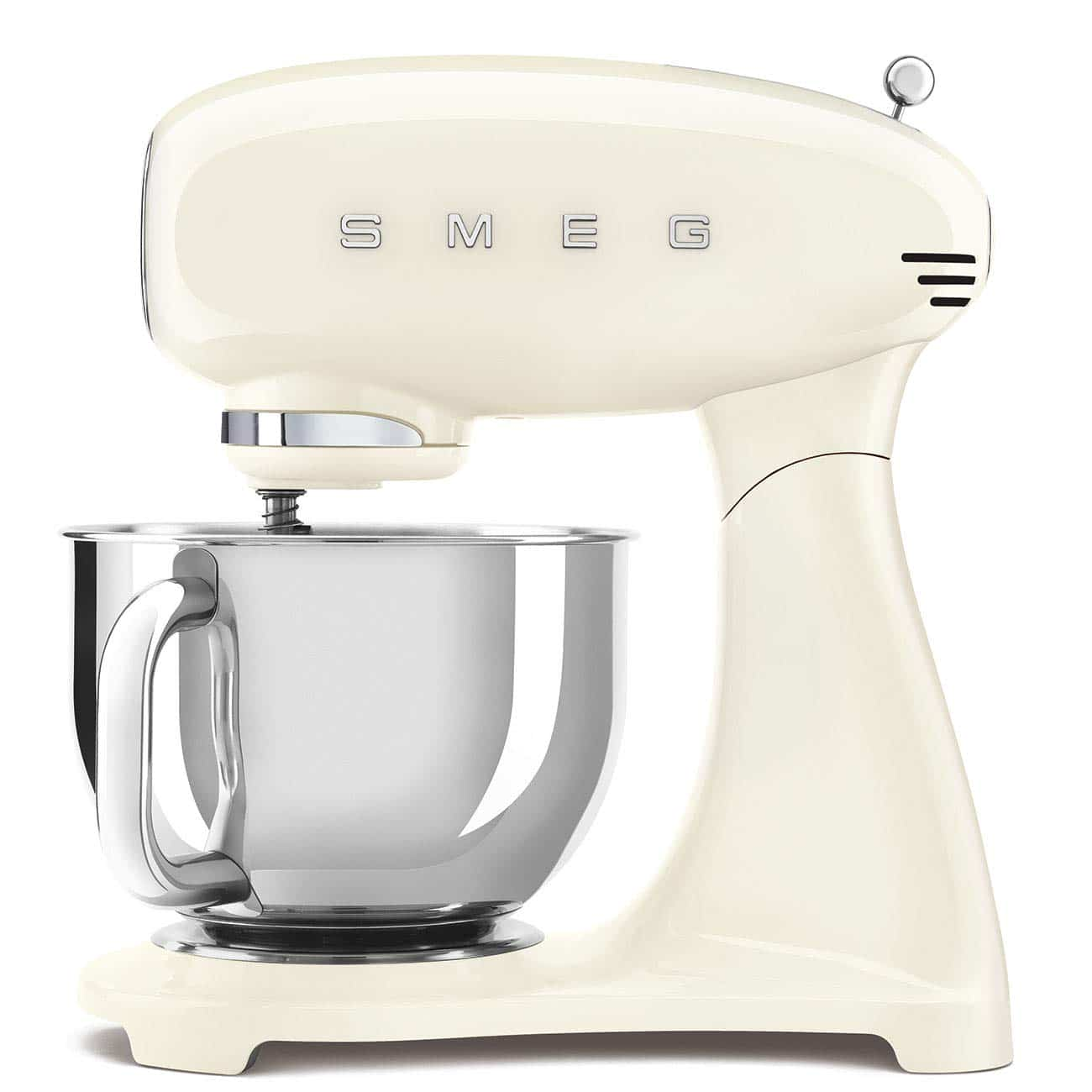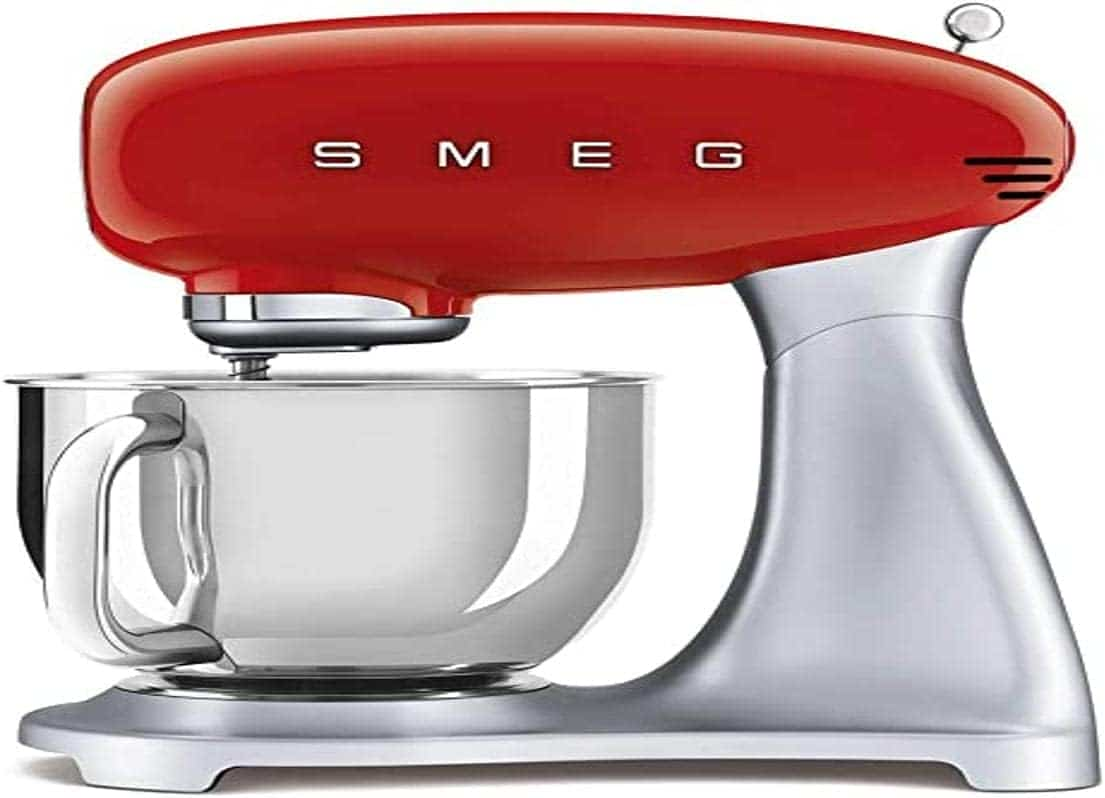Frequently asked questions about coffee
How To Identify And Clean Latte Stains In Unexpected Places
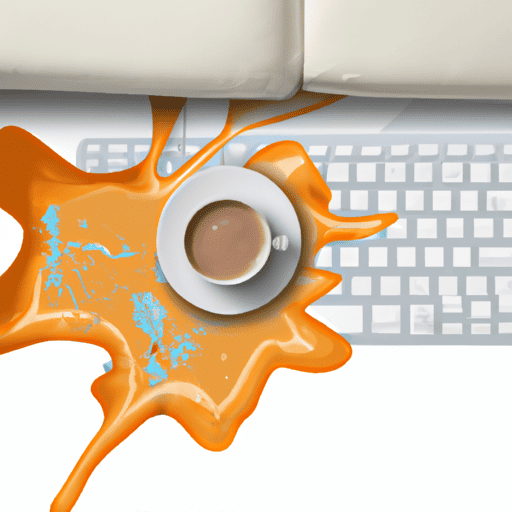
As a self-proclaimed coffee addict, I have come to accept that spills and stains are inevitable. However, when it comes to latte stains in unexpected places, things can get a bit messy.
From clothes to upholstery and hard surfaces, these creamy espresso-based beverages leave behind stubborn marks that require specific cleaning techniques.
Let’s face it: latte stains are not the most pleasant sight, but with the right tools and knowledge, you can tackle them head-on.
In this article, I will share some tips on identifying different types of latte stains and how to effectively remove them from various surfaces.
So grab a cup of joe (hopefully without any spills), and let’s dive into the world of latte stain removal!
Key Takeaways
- Latte stains are inevitable for coffee addicts and can be found on various surfaces including clothes, upholstery, and electronics.
- Effective home remedies for removing latte stains include white vinegar and water, baking soda and water, and warm water and dish soap.
- Prevention measures such as using coasters, wiping up spills immediately, and avoiding multitasking can help prevent future stains.
- Proper drying techniques, including using absorbent materials and allowing ample time for air drying, are crucial in preventing further damage to the stained surface.
Different Types of Latte Stains
You’re probably wondering what types of latte stains you might encounter – well, let me tell you! There are several common causes of these pesky stains, including spills on clothing and carpets, as well as residue on kitchen surfaces. Prevention measures for latte stains include being careful when handling hot beverages and wiping up any spills immediately.
Another type of latte stain that can be particularly tricky to deal with is the one left behind on car seats or upholstery. This type of stain is often caused by spilled coffee during a morning commute. To prevent this from happening, it’s important to secure your beverage while driving and avoid sudden stops or turns that could cause spills.
There are also latte stains that can be found in unexpected places like electronics. If you accidentally spill coffee on your laptop or phone, it’s important to act fast. Wipe off any excess liquid immediately and turn off the device if necessary. These types of stains can be difficult to remove, so it’s best to seek professional help if needed.
Now that we’ve discussed the different types of latte stains you might encounter, let’s move onto how to identify the stain itself.
Identify the Stain
If you’ve ever spilled a creamy, foamy drink like a latte, you know how frustrating it can be to remove the stain. Identifying common latte stains is the first step in effectively removing them.
The most common types of latte stains include milk, coffee, and sugar. To identify the stain, start by examining the color and texture of the spill. If it’s a light-colored stain with a creamy texture, it’s likely to be milk. Coffee stains are typically dark brown or black, while sugar stains may appear as sticky residue on surfaces.
Once you’ve identified the type of stain, it’s time to take action using effective home remedies for removing latte stains. For milk spills, mix equal parts white vinegar and water and apply directly onto the stain. Coffee stains can be removed with baking soda mixed with water until a paste forms. Sugar residue can be wiped away with warm water and dish soap.
Now that you have identified and treated the latte stain appropriately, it’s time to move on to blotting the area gently with a clean cloth until dry. This will ensure that no excess moisture remains, which could cause damage or further staining on surfaces such as carpets or upholstery.
Blot the Stain
Next up, it’s time to gently blot the stained area with a clean cloth until all excess moisture has been absorbed. Blotting is an important step in removing latte stains because it helps prevent the stain from spreading further into the fabric or surface.
To blot effectively, place the cloth over the stain and press down gently using your hand or a flat tool like a butter knife. When blotting, avoid rubbing or scrubbing vigorously as this can set the stain deeper into the material. Instead, use gentle tapping motions to lift off as much of the stain as possible.
For larger stains, you may need to switch to a fresh part of the cloth and continue blotting until no more moisture is being absorbed. If traditional blotting techniques don’t work, there are alternative stain removal methods that you can try before resorting to harsh chemicals.
For example, mixing equal parts vinegar and water can be effective in breaking down coffee stains. Simply apply this solution onto the stained area and let it sit for 10-15 minutes before wiping away with a damp cloth. With these methods in mind, we’re one step closer to completely removing those stubborn latte stains!
With all excess moisture now removed from the stained area using gentle blotting techniques or alternative cleaning methods, it’s time to move on to using a stain remover for any remaining residue left behind by your latte spill.
Use a Stain Remover
Now it’s time to tackle those stubborn stains with a stain remover that’ll help break down any remaining residue and leave your fabric or surface looking as good as new.
When choosing a stain remover, it’s important to consider its effectiveness in removing latte stains. Look for one that specifically targets coffee or tea stains, as these’ll be most effective.
Here are some tips on using a stain remover effectively:
- Apply the stain remover directly onto the stained area and let it sit for at least 5 minutes.
- Use a soft-bristled brush to gently scrub the area in circular motions.
- Rinse the area thoroughly with cold water.
- Repeat the process if necessary until the stain’s completely removed.
If you don’t have a stain remover on hand, there’re alternative cleaning methods you can try. For example, mixing equal parts white vinegar and water can be an effective solution for removing coffee stains from surfaces like countertops or ceramic dishes. Another option is using baking soda mixed with water to create a paste that can be applied directly onto clothing stains.
Now that you know how to use a stain remover effectively or have alternative cleaning methods available, it’s time to move onto the next step: cleaning latte stains from clothes.
Clean Latte Stains from Clothes
When it comes to cleaning latte stains from clothes, there are a few key steps that I always follow.
First and foremost, pre-treating the stain is crucial in order to loosen up any coffee residues before washing.
From there, I make sure to wash the clothes using a quality laundry detergent and on a setting that’s appropriate for the fabric type.
With these simple steps, my clothes always come out looking as good as new!
Pre-treating the Stain
To start tackling the latte stain, you’ll want to grab some paper towels and gently blot the affected area like a butterfly landing on a flower petal. This will help remove any excess liquid from the surface of the stain before it sets in.
Once you’ve removed as much liquid as possible, you can move on to pre-treating the stain. There are several effective techniques for pre-treating a latte stain, but one of the most recommended products is a mixture of equal parts white vinegar and water.
Simply apply this solution directly to the stained area and let it sit for about 10-15 minutes before rinsing with cold water. With these steps completed, you’re now ready to move on to washing your clothes to completely remove any remaining stains.
Washing the Clothes
After pre-treating the stain with a vinegar and water solution, it’s time to throw the clothes in the washing machine.
Here are some laundry hacks to prevent future latte stains on your clothes:
- Use a napkin or paper towel to dab any spills immediately.
- Avoid rubbing the stain as it can push it deeper into the fabric.
- Wash your clothes inside out to prevent fading and preserve colors.
- Consider using a laundry detergent specifically designed for removing tough stains.
Stain prevention is always better than having to deal with tough stains later on. However, if you do end up with a latte stain on your carpet, don’t worry! There are ways to remove those pesky stains too.
Remove Latte Stains from Carpets
Got a latte stain on your carpet? Don’t worry! You can easily remove it with these simple steps.
First, you’ll need to blot up as much of the liquid as possible using a clean cloth or paper towel. Be sure not to rub the stain further into the carpet fibers.
Once you’ve removed as much of the excess liquid as possible, sprinkle some baking soda over the stained area and let it sit for about 15 minutes.
Next, mix together a solution of equal parts white vinegar and water in a spray bottle. Spray the solution onto the baking soda-covered stain and let it sit for another 15 minutes.
Then, use a clean sponge or cloth to blot away any remaining moisture and residue from the carpet.
These carpet cleaning hacks are an easy DIY stain remover for carpets that will leave your floors looking like new again.
Now that you know how to remove latte stains from your carpets, let’s move on to tackling those pesky stains on upholstery furniture in our next section.
But what if you spilled your latte on your favorite armchair instead? No worries – we’ll show you how to clean latte stains from upholstery next.
Clean Latte Stains from Upholstery
If you’re in a jam and spilled your latte on the couch, don’t cry over spilt milk – we’ve got you covered with tips to remove it from upholstery. Upholstery protection is important to prevent stains from setting in. If possible, treat the stain as soon as it happens by blotting up as much of the liquid as possible with a clean cloth or paper towel.
Here are some DIY stain removers that can help remove latte stains from upholstery:
1) Mix equal parts white vinegar and water in a spray bottle. Spray the affected area and let sit for 15 minutes before blotting with a clean cloth.
2) Create a paste using baking soda and water, apply it to the stained area, and let it sit for 30 minutes before vacuuming it up.
3) Use rubbing alcohol on a clean cloth to dab at the stain until it lifts.
4) For more stubborn stains, try using an enzyme-based cleaner made specifically for upholstery.
Now that you know how to tackle latte stains on your couch or other upholstered furniture, let’s move onto cleaning them off hard surfaces like countertops or floors.
Clean Latte Stains from Hard Surfaces
When it comes to cleaning latte stains from hard surfaces, I’ve found that using a cleaning solution is the most effective method.
First, I apply the solution to a clean cloth and then gently wipe the surface in circular motions until the stain disappears.
Finally, I use a dry cloth to remove any excess moisture and ensure the surface is completely clean.
Using a Cleaning Solution
To effectively remove latte stains from unexpected surfaces, I highly recommend using a cleaning solution that’s specifically designed for the type of material you’re working with. This’ll ensure that the stain is removed without causing any damage to the surface.
When choosing a cleaning solution, consider using eco-friendly options as they’ve numerous benefits such as being better for your health and the environment, and also leaving behind less residue than traditional cleaners.
In addition to selecting an appropriate cleaning solution, it’s important to take steps to prevent future stains from occurring. One tip’s to always use coasters or placemats when enjoying your latte on surfaces that’re prone to staining. Another tip’s to wipe up spills immediately before they’ve a chance to set in.
By taking these preventative measures, you can minimize the likelihood of having to deal with stubborn latte stains in the future. Now let’s move onto wiping down the surface after applying the cleaning solution.
Wiping the Surface
First, gently glide a soft cloth over the latte stain to gather any remaining debris. This will help prevent scratching or damaging the surface while wiping it down.
Choosing the right wiping cloth is also important. A microfiber cloth or a cotton towel that’s clean and free of lint works best. Avoid using paper towels or rough fabrics as they can leave behind fibers and create additional mess.
Next, dampen the cloth with water and wipe the surface in a circular motion until all traces of the latte stain are removed. It’s important to avoid common wiping mistakes such as using too much pressure or scrubbing too vigorously, which could cause damage to delicate surfaces like leather or suede.
Once you’ve wiped down the area thoroughly, move on to drying it with a dry towel to ensure there’s no moisture left behind before moving on to the next step about how to dry the surface properly without leaving any streaks or residue.
Dry the Surface
Now that you’ve blotted the latte stain, grab a clean cloth or paper towel and gently dry the surface using a dabbing motion. It’s important to remove as much moisture as possible from the affected area to prevent any further spreading of the stain.
Here are some tips for effectively drying the surface:
- Avoid rubbing or scrubbing the area vigorously as this can damage the material and cause the stain to set in.
- Use absorbent materials such as microfiber cloths or white vinegar to help soak up any excess liquid.
- Allow ample time for air drying before using any heat sources like blow dryers or heaters. This will prevent shrinkage, warping, or discoloration of certain fabrics and surfaces.
- If dealing with a carpeted area, use a wet/dry vacuum cleaner to extract any remaining moisture.
Properly drying your stained surface is crucial in preventing further damage and ensuring effective cleaning. To avoid future spills altogether, consider implementing some prevention tips like using spill-resistant cups or avoiding placing drinks near delicate fabrics.
Prevention Tips for Future Spills
Congratulations, you’ve spilled your latte again! Maybe it’s time to consider using spill-resistant cups or not placing drinks near delicate fabrics. Just a thought.
Prevention is key when it comes to avoiding future spills. Here are some tips for maintaining clean surfaces and preventing spills:
Firstly, try to avoid multitasking while holding your coffee. This means not trying to carry multiple bags or items with one hand while holding a hot beverage in the other hand. Also, be mindful of where you place your drink – try to keep it on a flat and stable surface rather than on an uneven or wobbly one.
Secondly, make sure that your cup lid is securely fastened before taking a sip. A loose lid can easily result in coffee spilling all over your shirt or desk. Additionally, if you’re carrying a travel mug with you, make sure the opening is closed tightly so that no liquid can leak out.
Lastly, always have paper towels or cleaning wipes handy just in case of any unexpected spills. The quicker you can clean up the mess, the less likely it is that any stains will set into surfaces like carpets or upholstery.
By following these tips for preventing spills and maintaining clean surfaces, hopefully you’ll be able to enjoy your morning latte without any more accidents!
Frequently Asked Questions
How do I prevent latte stains from happening in the first place?
To prevent latte stains from happening in the first place, I always make sure to be extra careful when handling my coffee. One of the best preventive measures is to use a spill-proof lid on your cup or mug. This will ensure that even if you accidentally knock it over, your drink won’t spill and cause any stains.
Another alternative solution is to use a coffee sleeve or insulator around your cup. This not only keeps your hands from getting burned but also prevents condensation from forming on the outside of the cup, which can lead to water rings and potential staining.
Lastly, I always recommend being aware of where you place your cup and avoiding placing it on uneven surfaces or near objects that could bump into it. By taking these simple steps, you can enjoy your latte without worrying about unwanted stains!
Can I use household items to remove latte stains instead of a stain remover?
I’ve got good news for those who want to remove latte stains without traditional stain removers. There are plenty of alternative methods and eco-friendly solutions that can help you get rid of these pesky marks.
From using vinegar and baking soda to club soda and salt, there are many household items that can do the job effectively. These options not only save you money but also reduce your carbon footprint by avoiding harsh chemicals.
So next time you spill your latte on an unexpected surface, don’t panic! Just reach for one of these natural remedies and watch the stain disappear before your eyes.
How do I clean latte stains from leather surfaces?
When it comes to leather care, stain removal techniques can be tricky. If you’re dealing with a latte stain on a leather surface, there are a few things you can try before resorting to professional help.
First, mix together equal parts water and vinegar and apply the solution to the stained area using a soft cloth. Gently rub in circular motions until the stain lifts. If this doesn’t work, you can try using a mixture of baking soda and water to create a paste that can be applied to the stain and left for 10-15 minutes before wiping away.
It’s important not to use any harsh chemicals or abrasive materials when cleaning leather as this can cause further damage. Remember that prevention is key – try to avoid spills altogether by being careful when handling food and drinks around your leather surfaces.
Is it safe to use bleach on latte stains?
I once made the mistake of using bleach on a coffee stain, thinking it would be the ultimate solution. However, I quickly learned my lesson when the bleach ended up discoloring and damaging the fabric beyond repair.
Therefore, I can’t recommend using bleach as a safe option for removing latte stains. Instead, there are many bleach alternatives that can effectively remove these stubborn stains without causing harm to your surfaces or clothing. Some popular options include vinegar and baking soda solutions, hydrogen peroxide, or enzyme-based cleaners.
It’s important to treat the stain as soon as possible and blot rather than rub to avoid spreading it further. By following these latte stain removal techniques and avoiding harsh chemicals like bleach, you can effectively tackle those pesky stains without causing any additional damage.
What should I do if the latte stain has been there for a long time and is now set in?
If a latte stain has been left for too long and is now set in, it may be more difficult to remove. However, there are still some steps I can take to try and remove the stain myself before resorting to professional cleaning options.
First, I would try using a mixture of vinegar and baking soda to create a paste that can be applied directly onto the stained area. This should be left on for about 10-15 minutes before being wiped away with a damp cloth.
If this doesn’t work, I might try using a commercial stain remover specifically designed for coffee or tea stains. If all else fails, it may be necessary to seek out professional cleaning options such as steam cleaning or dry cleaning services.
It’s important to note that leaving stains untreated for extended periods of time can make them much harder (if not impossible) to remove completely, so prompt attention is always best when dealing with any kind of spill or stain.
Conclusion
Well, folks, that’s all for today on how to identify and clean latte stains in unexpected places. Don’t let a spilled latte ruin your day – with these tips, you can tackle even the toughest of stains!
Remember to always identify the stain before taking any action, as different types of stains require different cleaning methods. Once you’ve identified the stain, blot it gently with a cloth or paper towel before applying a stain remover. And don’t forget to follow specific cleaning instructions depending on the surface you’re dealing with – whether it’s clothes, upholstery or hard surfaces.
With a little elbow grease and some know-how, those pesky latte stains will be gone in no time! As they say, "where there’s a spill, there’s a way."So next time you find yourself faced with an unexpected latte stain, fear not! Armed with these tips and tricks, you’ll be able to conquer any coffee-related messes that come your way.
Happy cleaning!
In the vast and diverse world of coffee, coffee alternatives, and tea, Olivia has found her calling. As an author and a dedicated coffee and tea aficionado, her work for Cappuccino Oracle reflects her profound love and understanding of the intricate complexities found within these beverages. Olivia’s passion for the subject serves as both a catalyst for her creativity and a connection point with her audience.
Olivia’s appreciation for coffee, coffee alternatives, and tea blossomed at an early age. She discovered that these beverages invigorated her senses and stimulated her creative spirit. From the nuanced flavors of single-origin roasts to the captivating narratives intertwined with coffee, coffee alternatives, and tea trade and culture, Olivia found an unlimited source of inspiration in her daily cup.
Her love for these beverages and her talent for storytelling eventually converged at Cappuccino Oracle. As an author, Olivia’s mission is to illuminate the intricate tapestry that makes up the world of coffee, coffee alternatives, and tea. Her articles span a diverse range of topics, encompassing everything from the unique flavors of different brews to the sociocultural history intertwined with their cultivation and consumption.
Frequently asked questions about coffee
Cold Brew: Healthier, Sweeter, Stronger Coffee

I have always been a coffee lover, but I recently discovered a new favorite way to enjoy my beloved beverage: cold brew coffee.
Not only is it a refreshing and delicious alternative to hot coffee, but it also has numerous health benefits that make it a great choice for anyone looking to improve their diet.
Cold brew coffee is less acidic than regular coffee, which means it’s gentler on the stomach and can reduce acid reflux. It’s also naturally sweeter and has a smoother taste than hot coffee, making it a great option for those who prefer less bitter coffee.
Plus, it has 22.8% more caffeine than regular drip coffee, which can give you a much-needed energy boost without the jitters that come with other caffeinated beverages.
In this article, I’ll share everything you need to know about cold brew coffee, including its benefits, how to make it at home, and why it’s a sustainable and convenient choice for coffee lovers everywhere.
Key Takeaways
- Cold brew coffee has numerous health benefits, such as being less acidic, naturally sweeter, and having more caffeine than regular coffee.
- Consuming caffeine in moderation can lead to various health benefits, including reducing the risk of diseases, improving memory, and aiding in weight loss.
- Making cold brew coffee at home is a simple and enjoyable process, and it can introduce drinkers to new and enticing flavor profiles.
- Cold brew coffee is a great alternative to regular coffee for those looking for a healthier, tastier, and more enjoyable cup of joe.
Benefits of Cold Brew
I love that cold brew coffee has so many benefits. It’s less acidic, naturally sweeter, and has more caffeine than regular coffee. As someone with a sensitive stomach, I appreciate that cold brew is less acidic and easier on my digestive system.
Plus, the natural sweetness of cold brew eliminates the need for added sugar and syrups, making it a healthier option for coffee lovers.
Another benefit of cold brew is its higher caffeine content, which is great for those looking for an extra boost of energy. As a fitness enthusiast, I also appreciate that cold brew is better for exercise due to its lower acidity, making it easier on the stomach before, during, and after a workout.
Drinking cold brew after a workout can also help replenish glycogen levels faster and strengthen muscles, making it a great option for post-workout recovery.
Making Cold Brew
To make this delicious beverage, all you need are coarsely ground coffee beans and room temperature water. Simply combine the two in a large jug and let it steep for 12-24 hours.
Once the steeping process is complete, strain the coffee grounds using a cheesecloth strainer and enjoy your homemade cold brew coffee.
There are plenty of DIY methods for making cold brew, and each one can result in a unique flavor profile. You can experiment with different coffee bean varieties, water-to-coffee ratios, and steeping times to find the perfect combination that suits your taste.
Making cold brew can be a fun and rewarding activity, and the end result is a healthier, sweeter, and stronger coffee that you can enjoy all week long.
Comparison to Regular Coffee
Comparing the caffeine content between cold brew and regular coffee, it’s important to note that cold brew has 22.8% more caffeine than drip coffee. This makes it an ideal choice for those who need an extra boost of energy in the morning or before a workout. While some may argue that espresso is the strongest form of coffee, it’s important to note that cold brew can have a higher caffeine content and a smoother taste than espresso.
To better understand the differences between cold brew and regular coffee, take a look at this table:
Cold Brew Drip Coffee Caffeine content 200mg per 8oz 163mg per 8oz Acidity Less acidic, smoother taste More acidic, bitter taste Preparation Steeped in cold water for 12-24 hours Coffee grounds are run through hot water for a few minutes Health benefits More caffeine for an energy boost Lower acidity for easier digestion
In terms of health benefits, cold brew may be the better choice for those with sensitive stomachs or those looking for a healthier option. With its lower acidity and higher caffeine content, cold brew can provide the energy boost without the negative side effects of regular coffee. However, it’s important to note that moderation is key, as consuming too much caffeine can have negative effects on the body. Ultimately, the choice between cold brew and regular coffee comes down to personal preference and individual needs.
Caffeine Content
As a coffee lover, I was surprised to discover the caffeine content difference between my usual cup and cold brew. It was eye-opening and added an extra boost to my morning routine. Compared to drip coffee, cold brew has a whopping 22.8% increase in caffeine content, making it a stronger option for those needing an extra jolt of energy.
It’s also worth noting that cold brew has less caffeine than espresso, so it’s a great middle-ground option for those who find espresso too intense. Not only does the higher caffeine content in cold brew provide an energy boost, but it’s also been shown to increase productivity.
Consuming caffeine in moderation has been linked to improved focus, alertness, and overall cognitive function. So, if you’re looking for a way to kickstart your mornings or stay focused during a long workday, cold brew could be a great option to try.
Health Benefits of Caffeine
I’ve learned that moderate caffeine consumption can have various health benefits, such as reducing the risk of diseases and improving cognitive function. Studies have shown that caffeine can help protect against diseases such as Parkinson’s and Alzheimer’s, which affect the brain’s cognitive function.
Additionally, caffeine has been shown to improve memory and cognitive performance, making it a great supplement for those looking to enhance their mental clarity. Another benefit of moderate caffeine consumption is that it can aid in weight loss. Caffeine has been shown to increase metabolic rate and fat burning, making it a great addition to a healthy diet and exercise routine.
However, it’s important to remember that excessive caffeine consumption can have negative effects on one’s health, so moderation is key. Overall, incorporating moderate amounts of caffeine, such as in a cup of cold brew coffee, can have positive effects on both cognitive function and weight loss.
Collagen Protein Powder
Adding collagen protein powder to my post-workout cold brew creates a creamy and nourishing elixir that helps with muscle recovery and promotes healthy skin. Collagen supplements have been gaining popularity in recent years, and for good reason.
Collagen is a protein that makes up a large part of our skin, bones, and muscles. As we age, our bodies produce less collagen, leading to wrinkles, joint pain, and weaker muscles. By adding collagen protein powder to my cold brew, I’m providing my body with the necessary building blocks to maintain healthy skin and strong muscles.
But the benefits of collagen protein powder go beyond just aesthetics. When consumed after a workout, collagen can help with post-workout recovery by reducing inflammation and promoting muscle growth. It can also aid in joint health, as it is a major component of cartilage.
By incorporating collagen into my cold brew routine, I’m not only enjoying a delicious and healthier cup of coffee but also giving my body the essential nutrients it needs to function at its best.
Convenient and Sustainable
By incorporating collagen protein powder into my post-workout routine, I’m able to conveniently and sustainably provide my body with the essential nutrients it needs for optimal performance and recovery.
Collagen protein powder is a convenient and easy way to supplement my diet with the necessary amino acids that support muscle growth and repair. Not only is collagen protein powder an excellent source of protein, but it’s also easy to mix into my cold brew coffee, making it a convenient and delicious way to refuel after a tough workout.
Using collagen protein powder in my cold brew coffee also helps me reduce waste. By batch brewing a large amount of cold brew at once, I’m able to minimize the amount of packaging and waste that comes with buying individual servings of protein drinks. This not only saves me money in the long run but also helps me feel good about my impact on the environment.
Overall, incorporating collagen protein powder into my cold brew coffee has been a game-changer for my post-workout routine. It provides me with the energy and nutrients I need in a convenient and sustainable way.
Author and Website Information
Moving on from the convenience of cold brew, let me introduce you to the author and website behind this informative text. I developed an obsession with coffee. This fascination led me to write for Cappuccino Oracle, where I explore my love for coffee and help others brew their perfect cup.
Cappuccino Oracle is a participant in the Amazon Services LLC Associates Program, an affiliate advertising program designed to provide a means for sites to earn advertising fees by advertising and linking to Amazon.com. My passion for coffee has driven me to research and discover new brewing techniques and flavor profiles continuously.
Through Cappuccino Oracle, I aim to share my knowledge and expertise with fellow coffee enthusiasts and help them enjoy a healthier, sweeter, and stronger cup of coffee.
Discussion Ideas Description The Science of Coffee Discuss the chemistry behind coffee and how it affects its taste and aroma. Brewing Techniques Share different brewing techniques and methods to make the perfect cup of coffee. Coffee Bean Varieties Explore the different types of coffee beans and how they contribute to the flavor and aroma of coffee. Coffee and Health Discuss the various health benefits and drawbacks of consuming coffee in moderation. Cold Brew vs. Hot Brew Compare and contrast the differences between cold brew and hot brew coffee, and which one is better for certain occasions or preferences. The History of Coffee Explore the origins and evolution of coffee, from its discovery in Ethiopia to its global popularity today.
Frequently Asked Questions
What is the best type of coffee bean to use for cold brew?
What’s the best type of coffee bean to use for cold brew? Well, it all depends on your personal preference.
When it comes to the roasting process, medium to dark roast coffee beans tend to work best for cold brew as they have a bolder flavor profile. Additionally, exploring different flavor notes can lead to a more complex and enjoyable cup of cold brew. Some popular flavor notes include chocolate, nutty, and fruity.
It’s also important to consider the brew time and dilution when choosing coffee beans for cold brew. A longer brew time with coarsely ground coffee beans can result in a stronger and more concentrated cold brew, while a shorter brew time with a finer grind can lead to a lighter and more refreshing cup.
Experimentation is key to achieving the perfect cold brew ratio with different coffee beans.
Can cold brew be made with hot water instead of room temperature water?
I’ve experimented with making cold brew using hot water as an alternative to room temperature water, and I’ve found that it doesn’t produce the same smooth and sweet taste as traditional cold brew.
Cold brew is naturally less acidic and sweeter than regular hot coffee, and using hot water can result in a bitter and unbalanced flavor.
Additionally, one of the main benefits of cold brew is its higher caffeine content, which is achieved through a longer steeping process with room temperature water.
Overall, I would recommend sticking to the traditional method of making cold brew with room temperature water to fully experience its benefits.
How long does cold brew last in the refrigerator?
Storing cold brew in the refrigerator can be a tricky task, but with a little bit of know-how, it’s easy to keep your cold brew fresh for days. To properly store cold brew in the refrigerator, it’s important to transfer it from the brewing container to an airtight container. This will help prevent the coffee from absorbing any odors or flavors from the surrounding foods.
I recommend using a glass jar or bottle with a tight-fitting lid. Cold brew can last up to two weeks in the refrigerator if stored properly. If you’re looking to make cold brew without a coffee maker, there are a few tips to keep in mind.
First, you’ll need to use coarsely-ground coffee to ensure that the coffee doesn’t become too strong. Second, you’ll need to steep the coffee for at least 12 hours to achieve the desired strength and flavor. Lastly, make sure to strain the coffee through a cheesecloth or fine-mesh strainer to remove any sediment or grit.
With these tips in mind, making cold brew at home is easy and rewarding.
Is cold brew more expensive than regular coffee?
When it comes to cost comparison, cold brew coffee may seem more expensive than regular coffee at first glance. However, the economic impact of making cold brew at home can be significant.
While a cup of regular coffee may cost less per serving, cold brew can be made in larger batches and stored in the refrigerator for up to a week, providing a more cost-effective solution in the long run.
Additionally, making cold brew at home can be a fun and rewarding hobby, allowing you to experiment with different coffee beans and flavor profiles while also saving money.
So, while the initial cost of cold brew may be higher, the economic benefits of making it at home make it a worthwhile investment.
Can cold brew be made with decaf coffee beans?
I recently tried making cold brew coffee using decaf alternatives and was pleasantly surprised by the results. Although the caffeine content was significantly lower, the taste comparison was still enjoyable.
The process of making cold brew is the same regardless of whether you use regular or decaf beans, simply steeping them in room temperature water for 12-24 hours.
This alternative is great for those who want to enjoy the taste of cold brew without the caffeine jitters or those who are sensitive to caffeine. So, if you’re looking for a new way to enjoy coffee without the caffeine, give decaf cold brew a try.
Conclusion
Well, folks, it’s been a pleasure introducing you to the wonderful world of cold brew coffee. It’s a healthier, sweeter, and stronger alternative to regular coffee, and it’s incredibly easy to make at home.
Not only does it taste delicious, but it also has numerous health benefits that can help improve your overall well-being. So go ahead, give it a shot.
Your taste buds will thank you, and your body will too. Who knows, maybe cold brew will become your new best friend. As for me, I’ll be enjoying my cold brew with a splash of collagen protein powder, because who doesn’t love a little extra boost of health benefits?
Cheers to your new favorite cup of joe!
Arf, an author and an innovative enthusiast of coffee, coffee alternatives, and tea, plays a crucial role as a contributor to the esteemed Cappuccino Oracle platform. Renowned for his curiosity and passion for these captivating beverages, Arf has carved out a unique space for himself in the world of exploration and writing. He realized that coffee, coffee alternatives, and tea are not mere drinks to keep one awake, but universes of flavors and stories waiting to be explored.
Arf’s articles for Cappuccino Oracle blend meticulous research with personal experiences, providing readers with an in-depth understanding of various types of coffee, coffee alternatives, and tea, along with their unique characteristics, cultures, and histories. His honest reviews and engaging narratives guide readers on their own journeys, helping them discover their preferences and find their perfect brew.
Frequently asked questions about coffee
5 Tips For Fresher Coffee: Mastering Coffee Bean Storage!

As a coffee lover, I know that the freshness of coffee beans is the key to a perfect cup of Joe. That’s why proper storage is essential. In this article, I’ll share with you 5 tips for mastering coffee bean storage that will help you maintain the freshness of your coffee beans and ensure that every cup you brew is delicious and satisfying.
First, we’ll discuss why proper storage matters. Coffee beans are sensitive to heat, light, and air, which can cause them to lose their flavor and aroma. When coffee beans are exposed to these elements, they can become stale and tasteless.
Proper storage is essential to protect the beans from these harmful factors and maintain their freshness. With these 5 tips for coffee bean storage, you’ll be able to enjoy a consistently great-tasting cup of coffee every time.
Key Takeaways
- Proper storage is crucial for maintaining the freshness of coffee beans and preserving their taste and quality.
- Glass or ceramic storage containers that are tightly sealed and kept in a cool, dry, and dark place are preferred over metal tins to prevent interference with natural oils and flavors.
- The shelf life of coffee beans varies depending on their roast level, with lighter roasts having a shorter shelf life than darker roasts. Pre-roasted beans with a roast date ensure freshness.
- In addition to being a delicious beverage, coffee also provides various health benefits such as reducing the risk of cardiovascular disease and diabetes, aiding in weight loss, and providing antioxidants.
Why Proper Storage Matters
I know that proper storage is crucial for the freshest, best-tasting coffee, and it’s important to understand why.
One of the main reasons is the effects of moisture on coffee. When coffee beans or grounds are exposed to moisture, they can become stale and lose their flavor. This is why it’s important to store coffee in a cool, dry, and dark place away from sunlight. Fridges and freezers are not recommended for storing coffee as they can expose the coffee to moisture and affect its taste and quality.
Another important aspect of proper storage is buying small amounts of coffee. When coffee is exposed to air, it begins to oxidize and lose its freshness and flavor. Therefore, it’s better to buy small amounts of coffee and use it up quickly rather than buying in bulk and storing it for a long time.
Whole bean coffee lasts longer than pre-ground coffee, and ground coffee should be brewed within 15 minutes of grinding to maximize freshness. By following these tips for proper storage, you can ensure that your coffee stays fresh and flavorful for as long as possible.
Best Storage Practices
Glass or ceramic containers are preferable to metal tins when storing coffee beans to maintain their freshness and quality. These materials don’t have any negative effect on the taste and aroma of the coffee. Additionally, they provide a non-reactive environment that prevents any interference with the natural oils and flavors of the beans.
Glass or ceramic containers also help to keep moisture out, which can ruin the beans and lead to mold growth. To further prevent moisture, it’s important to keep the container tightly sealed and in a cool, dry, and dark place away from sunlight.
It’s also recommended to buy and store small amounts of coffee to ensure maximum freshness. This way, you won’t have to worry about the coffee going stale or losing its nutritional value.
By following these simple storage practices, you can enjoy a delicious cup of coffee that tastes just as good as the day it was roasted.
Additional Considerations
Finding the perfect spot to store your coffee beans can be a bit of a puzzle, but like any good mystery, it’s all about uncovering the clues.
In addition to the best storage practices mentioned earlier, there are a few more things to consider when it comes to keeping your coffee fresh and flavorful.
First, it’s important to consider the roasting techniques used for your coffee beans. Lightly roasted beans tend to have a shorter shelf life than darker roasts, so it’s important to use them up quickly.
Additionally, if you’re roasting your own beans at home, it’s important to let them rest for a few days before brewing to allow the gases to escape and the flavors to fully develop. And if you’re buying pre-roasted beans, look for ones with a roast date on the bag to ensure maximum freshness.
Finally, don’t forget about the health benefits of coffee! In addition to its delicious taste, coffee has been shown to have numerous health benefits, including reducing the risk of cardiovascular disease and diabetes, aiding in weight loss, and providing antioxidants.
So, by taking care to properly store your coffee beans, you can not only enjoy a great cup of coffee, but also reap the many health benefits it has to offer.
Frequently Asked Questions
Can coffee be stored in the fridge or freezer to extend its shelf life?
Storing coffee in the fridge or freezer may seem like a good idea to extend its shelf life, but it can actually have a negative impact on the flavor. Both environments expose coffee to moisture, affecting its taste and quality.
It’s better to store coffee in a cool, dry, and dark place away from sunlight, such as a pantry or cupboard. To tell if coffee has gone bad, you can perform a smell or taste test. If it has a sour or rancid smell, or tastes off, it’s time to get rid of it.
Proper storage is crucial for maintaining the freshness and nutritional value of coffee, and buying and storing small amounts can help.
Is it better to buy whole bean or pre-ground coffee for storage purposes?
After investigating the truth of the theory, it’s better to buy whole bean coffee for storage purposes.
This is because whole bean coffee lasts longer than pre-ground coffee. Additionally, grinding methods can affect the freshness of the coffee.
Grinding the coffee just before brewing it can enhance its flavor and aroma. Moreover, the type of coffee bean variety can also impact the shelf life of the coffee.
Arabica beans are higher quality and have a longer shelf life than Robusta beans. Therefore, it’s recommended to buy whole bean Arabica coffee and grind it just before brewing for the freshest and best-tasting coffee.
How long can you store coffee before it starts to lose its freshness?
Proper storage techniques are crucial for maximizing coffee freshness. Whole bean coffee can last up to two weeks if stored in a cool, dry, and dark place away from sunlight. Ground coffee, on the other hand, should be brewed within 15 minutes of grinding to ensure maximum freshness.
Glass or ceramic containers are preferable to metal tins as they do not affect taste. It’s recommended to buy and store small amounts of coffee to maintain freshness and quality. Roasting at home is also an option for maximum freshness but can be impractical.
Ultimately, the main reason to worry about storage is freshness, as proper storage techniques can counteract loss of freshness and nutritional value.
Are there any specific types of containers that are best for storing coffee?
When it comes to storing coffee, the type of container used can make a big difference.
Mason jars are a popular choice, but they may not be the best option. Vacuum sealed bags are a great choice for keeping coffee fresh and preventing exposure to air and moisture.
Opaque containers are also preferred over clear containers, as they prevent sunlight from affecting the coffee’s flavor.
Overall, it’s important to choose a container that is airtight and keeps the coffee in a cool, dry place. As someone who appreciates a good cup of coffee, I know that choosing the right container can make all the difference in the taste and freshness of my daily brew.
Does the type of roast affect how long coffee can be stored?
Roast levels have a significant impact on how long coffee can be stored. The aging process of coffee beans begins as soon as they’re roasted and continues over time.
Lighter roasts tend to have a shorter shelf life as they have a higher acidity level and contain more moisture. Darker roasts, on the other hand, have a longer shelf life as they have a lower acidity level and less moisture content.
However, it’s important to note that regardless of the roast level, coffee beans should be consumed within a few weeks of roasting to ensure the freshest and best-tasting coffee. Proper storage can also help extend the shelf life of coffee beans.
Conclusion
In conclusion, proper coffee bean storage is crucial for maintaining freshness and flavor. The five tips outlined above provide a comprehensive guide to mastering the art of coffee storage. By investing in airtight containers, storing beans away from light and moisture, and monitoring the roast date, coffee lovers can enjoy a consistently satisfying cup of Joe.
Remember, the key to fresher coffee is attention to detail. Don’t overlook the importance of proper storage, and don’t hesitate to experiment with different storage methods to find what works best for you. With these tips in mind, you’ll be well on your way to brewing the perfect cup of coffee every time.
So go forth and enjoy the rich, robust flavors of freshly stored coffee beans!
Arf, an author and an innovative enthusiast of coffee, coffee alternatives, and tea, plays a crucial role as a contributor to the esteemed Cappuccino Oracle platform. Renowned for his curiosity and passion for these captivating beverages, Arf has carved out a unique space for himself in the world of exploration and writing. He realized that coffee, coffee alternatives, and tea are not mere drinks to keep one awake, but universes of flavors and stories waiting to be explored.
Arf’s articles for Cappuccino Oracle blend meticulous research with personal experiences, providing readers with an in-depth understanding of various types of coffee, coffee alternatives, and tea, along with their unique characteristics, cultures, and histories. His honest reviews and engaging narratives guide readers on their own journeys, helping them discover their preferences and find their perfect brew.
Frequently asked questions about coffee
Caffeine Content In Coffee: The Ultimate Guide

As someone who relies on coffee to power through the day, I know the importance of understanding the caffeine content in my cup. Not all coffees are created equal, and the amount of caffeine can vary greatly depending on the type of coffee, brewing method, and serving size.
That’s why I’ve put together the ultimate guide to caffeine content in coffee, to help you find the perfect cup of coffee for your caffeine needs.
In this article, we’ll explore the different types of coffee and how they impact caffeine content, from bold and rich espresso shots to smooth and creamy lattes.
We’ll also dive into the various factors that can affect caffeine levels, including the roast level, brewing time, and water temperature.
And if you’re curious about the benefits of caffeine or just want to learn some fun coffee facts, we’ve got you covered there too.
So let’s get started and explore the world of caffeine content in coffee.
Key Takeaways
- Different types of coffee have varying amounts of caffeine, with drip coffee having the highest amount and specialty coffees having less due to added milk.
- Factors such as serving size, brewing method, water temperature, and roast degree also affect caffeine levels in coffee.
- Cold brew coffee typically has less caffeine than hot brewed coffee, but it could still be stronger due to smaller serving sizes.
- Drinking dark roast coffee regularly may reduce the risk of developing diabetes, according to Harvard researchers, and caffeinated beverages can lead to better brain function and increased exercise.
Types of Coffee
Oh great, just what I needed – more options to choose from when it comes to types of coffee and their varying caffeine levels. As someone who relies on caffeine to start their day, it’s important to know which types of coffee have the most caffeine.
Caffeine sources play a significant role in determining caffeine levels. Robusta coffee beans contain about twice as much caffeine as Arabica beans. This is because Robusta plants are easier to grow and have a higher yield, making them a more affordable option for coffee producers.
Brewing techniques also affect the caffeine content in coffee. Espresso has the most caffeine per ounce because of the way it’s brewed – hot water is forced through finely ground coffee at high pressure, extracting more caffeine. Drip coffee, on the other hand, has a lower caffeine content because the water passes through coarser grounds and is not under pressure. Cold brew coffee has less caffeine than hot brewed coffee because it’s brewed with cold water, which extracts caffeine more slowly. However, people often drink cold brew in smaller amounts, so the caffeine concentration per serving may still be higher.
Knowing the caffeine content of different types of coffee and brewing techniques can help you make a more informed choice when it comes to your daily cup of joe.
Factors Affecting Caffeine Levels
I’ve learned that the amount of caffeine in my coffee can vary greatly depending on factors such as the type of bean, roast level, and brewing method. Brewing methods play a crucial role in determining caffeine content, with espresso having the highest amount of caffeine per ounce. This is because the coffee is extracted under high pressure, resulting in a concentrated shot.
On the other hand, drip coffee has a higher caffeine content per serving due to its larger serving size. Serving sizes also affect caffeine levels, as a larger serving size means more caffeine intake. For example, a 16 oz cold brew can have up to 200 mg of caffeine, which is equivalent to an 8 oz serving of drip coffee.
It’s important to keep these factors in mind when ordering coffee, as the caffeine content can vary greatly even within the same type of coffee. Understanding these factors can help me make better choices when it comes to my caffeine intake.
Benefits and Curiosities
One thing that I find interesting is that drinking dark roast coffee regularly may reduce the risk of developing diabetes, according to Harvard researchers. This is because dark roast coffee contains a higher amount of compounds that protect the cells in our body from damage.
In addition to reducing the risk of diabetes, coffee has other health benefits such as reducing the risk of liver and colorectal cancer, and improving cognitive function.
Fun facts about coffee include that Arabica cherries must be handpicked when ripe, making it a labor-intensive process. This is why Arabica coffee is more expensive than Robusta coffee, which can be harvested mechanically.
Additionally, people in the US prefer drip coffee, while in Europe and other countries, espresso-based drinks are more popular. These differences in coffee culture highlight the diverse ways in which people enjoy their caffeine fix.
Overall, coffee is not just a delicious beverage, but it also has numerous health benefits and cultural significance.
Frequently Asked Questions
Is it possible to completely remove caffeine from coffee?
Completely removing caffeine from coffee is not feasible as it is a natural component of the bean. Decaf coffee goes through a process that removes most of the caffeine but can affect taste and availability.
Can the caffeine content in coffee vary depending on the time of day it is consumed?
The caffeine content in coffee can vary depending on the time of day it is consumed due to the Circadian rhythm impact on our body’s absorption and processing of caffeine. Additionally, brewing method effects can also impact caffeine levels in coffee.
How does the caffeine content in instant coffee compare to other types of coffee?
Wow, instant coffee is like a shot of adrenaline! Compared to brewed coffee, instant coffee has significantly higher caffeine content. The impact of roast on caffeine levels is also important to consider.
Are there any health risks associated with consuming high amounts of caffeine in coffee?
Consuming high amounts of caffeine in coffee can lead to long term effects such as increased heart rate, insomnia, and anxiety. Alternative options include decaf coffee, herbal tea, and reducing caffeine intake gradually.
How does the caffeine content in coffee compare to other popular caffeinated beverages, such as tea or soda?
Comparing coffee to tea and energy drinks, coffee typically has higher caffeine content per serving. A standard cup of coffee has 95-200mg of caffeine, while tea has 20-80mg, and energy drinks have 70-200mg per can.
Arf, an author and an innovative enthusiast of coffee, coffee alternatives, and tea, plays a crucial role as a contributor to the esteemed Cappuccino Oracle platform. Renowned for his curiosity and passion for these captivating beverages, Arf has carved out a unique space for himself in the world of exploration and writing. He realized that coffee, coffee alternatives, and tea are not mere drinks to keep one awake, but universes of flavors and stories waiting to be explored.
Arf’s articles for Cappuccino Oracle blend meticulous research with personal experiences, providing readers with an in-depth understanding of various types of coffee, coffee alternatives, and tea, along with their unique characteristics, cultures, and histories. His honest reviews and engaging narratives guide readers on their own journeys, helping them discover their preferences and find their perfect brew.
-
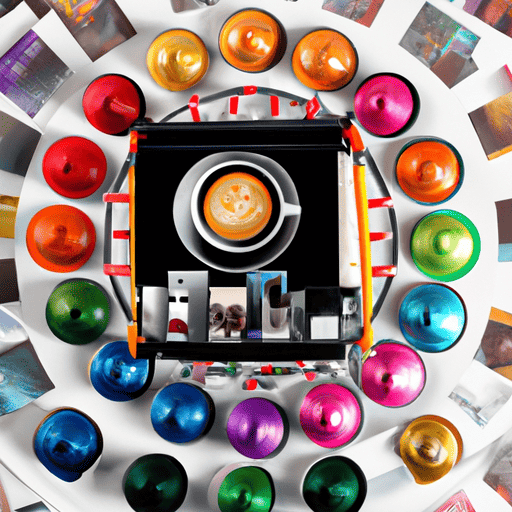
 Coffee Basics4 days ago
Coffee Basics4 days agoThe Ultimate Guide To Buying Nespresso Pods: Where And How?
-
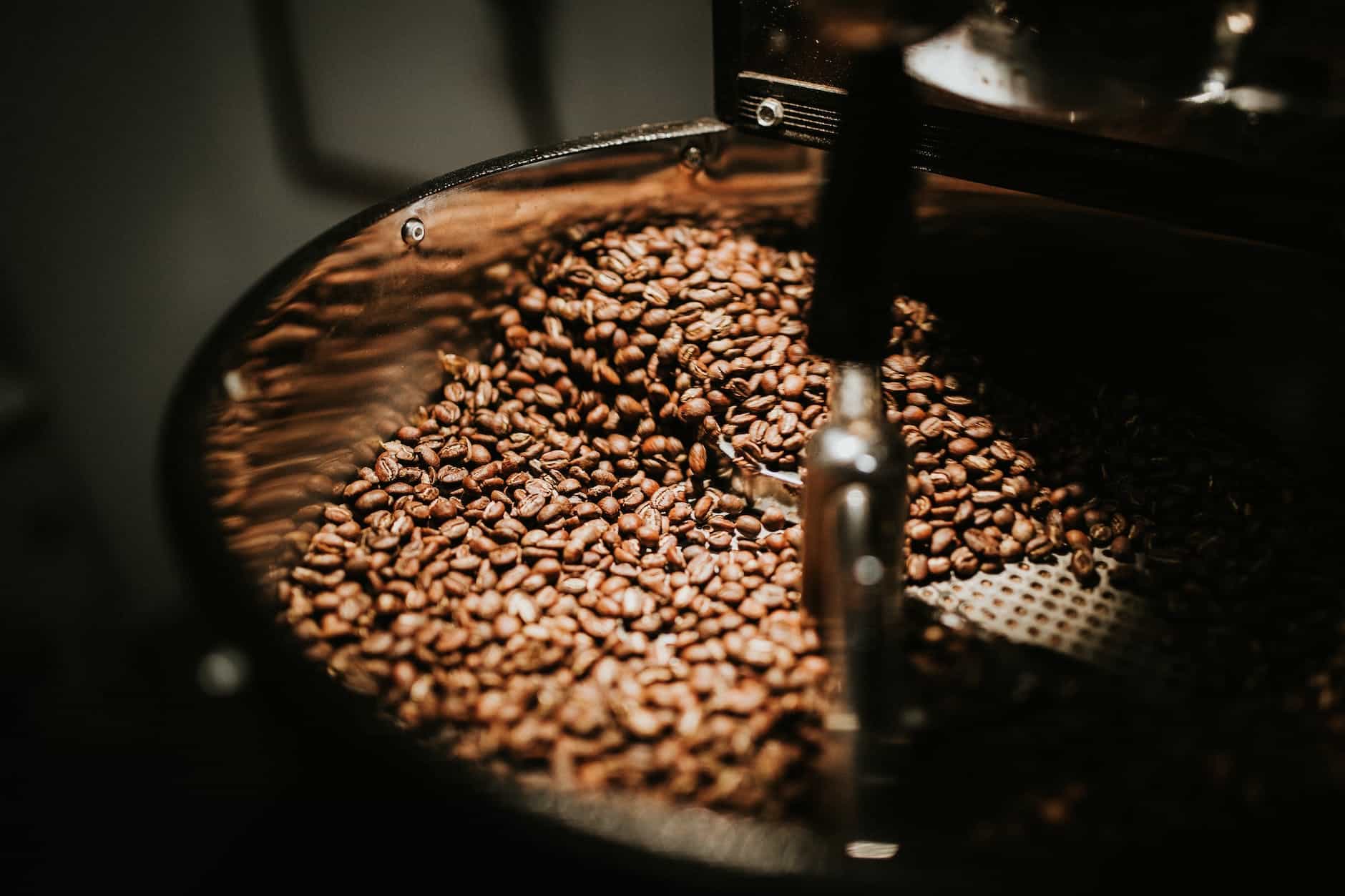
 Coffee Basics1 week ago
Coffee Basics1 week ago11 Best Medium Roast Coffees For Your Perfect Cup
-

 Coffee Basics7 days ago
Coffee Basics7 days agoStarbucks Venti Drinks: Customization And Pricing Guide
-

 Coffee Basics3 days ago
Coffee Basics3 days agoPerfect Your Espresso With Puck Screens: A Barista’s Secret
-
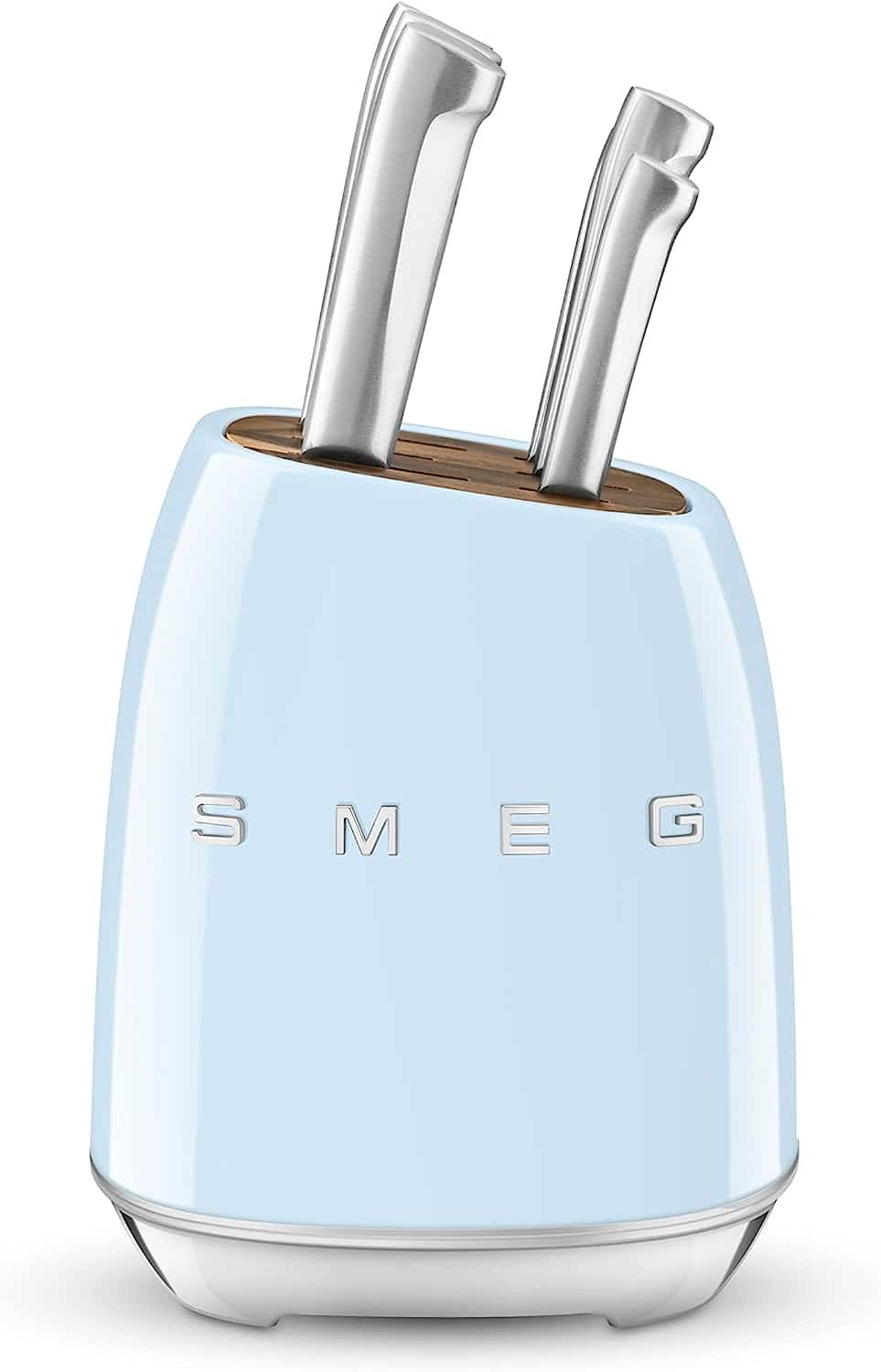
 Cappuccino Oracle Selected Reviews1 day ago
Cappuccino Oracle Selected Reviews1 day agoSmeg Knife Block Review Review [2024]
-
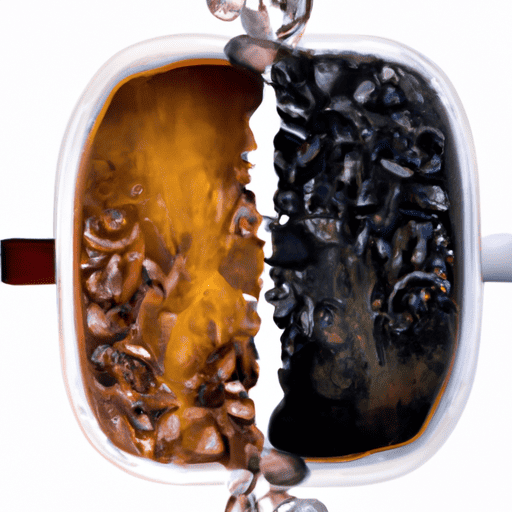
 Coffee Basics6 days ago
Coffee Basics6 days agoWhat Is Half-Caff Coffee? (And How Much Caffeine Is In It?)
-

 Coffee Basics6 days ago
Coffee Basics6 days ago9 Best Ground Coffee Brands For Your Perfect Cup
-

 Coffee Basics9 hours ago
Coffee Basics9 hours agoCan I Drink Coffee After Botox





